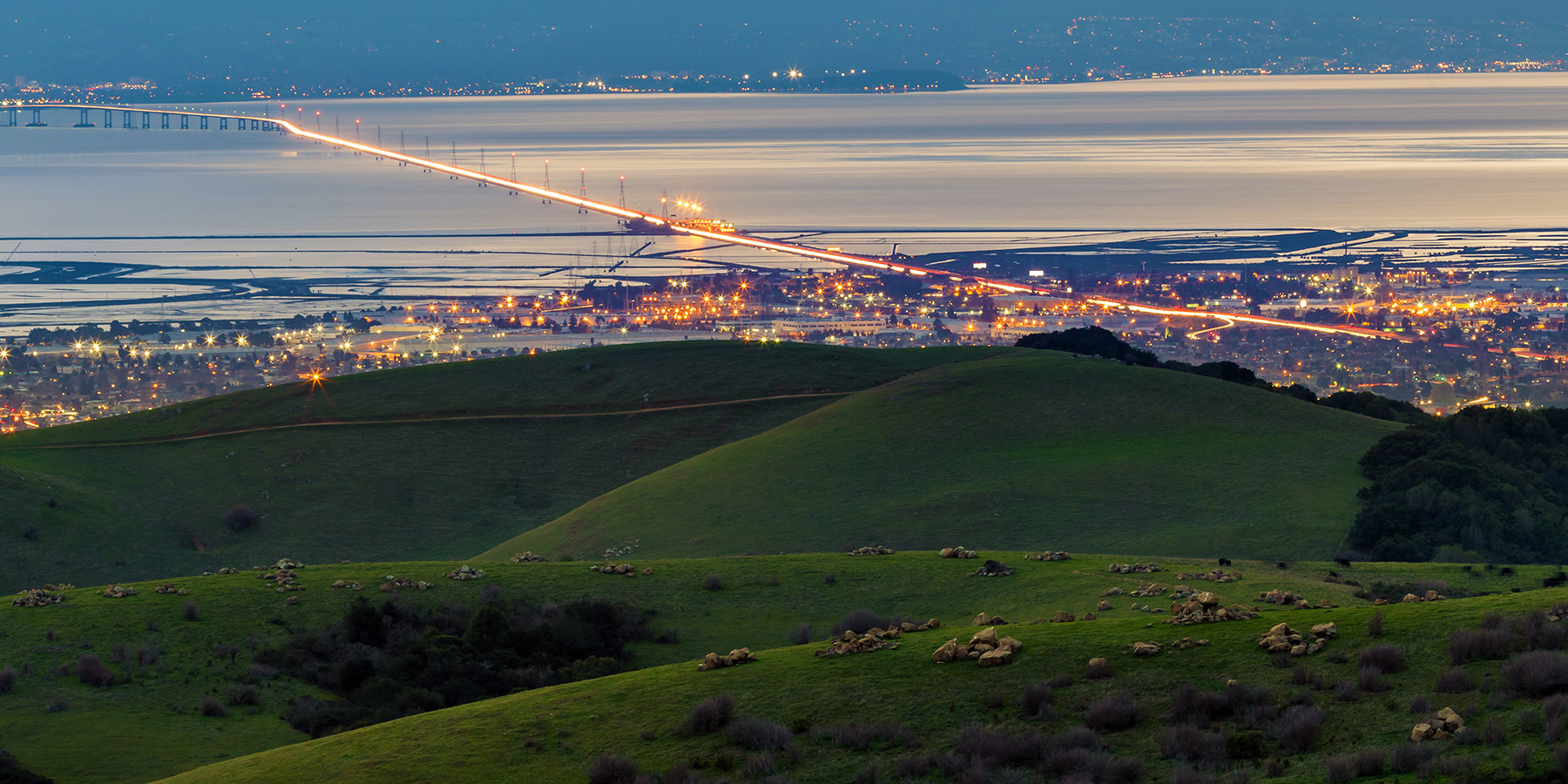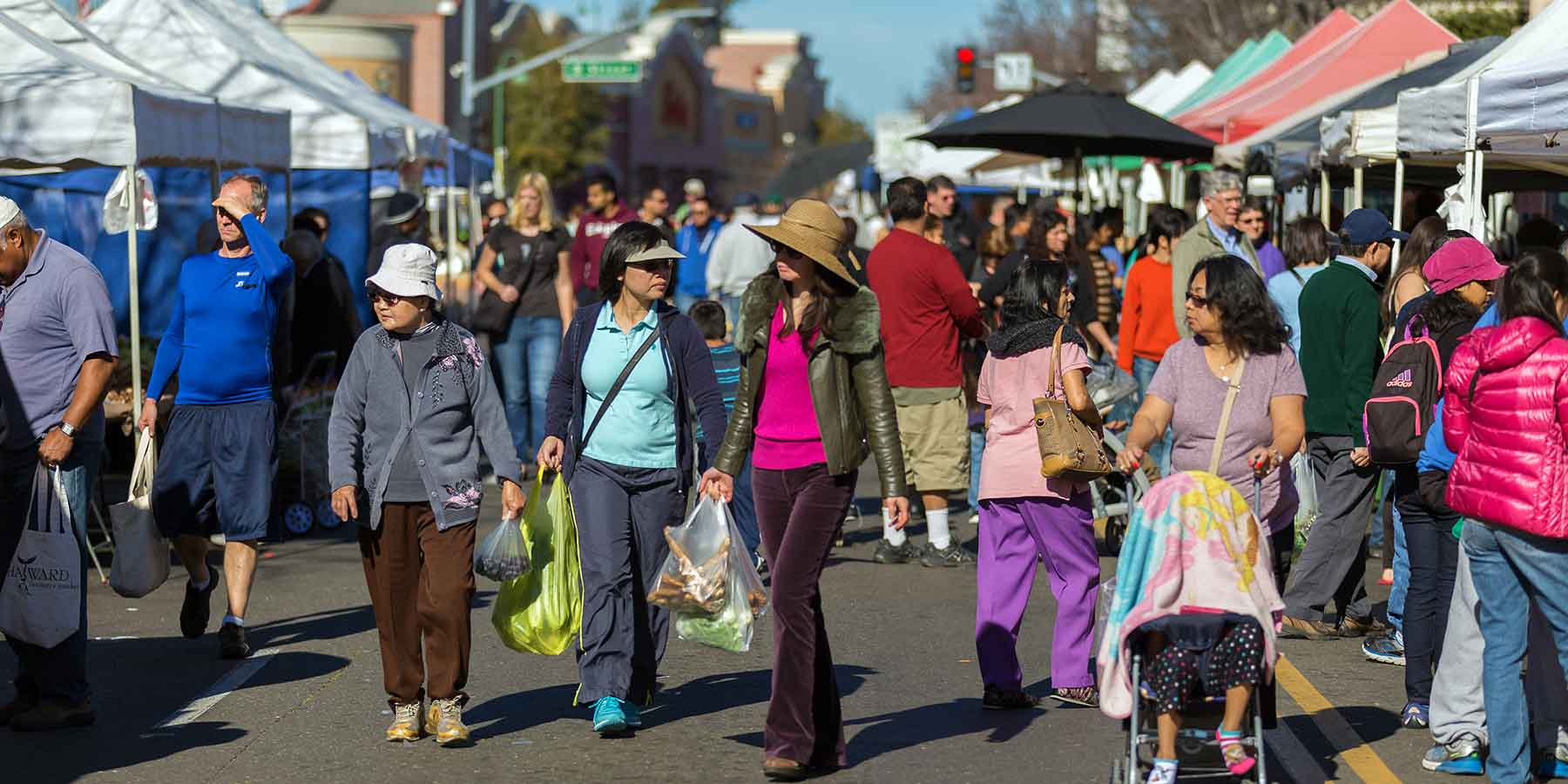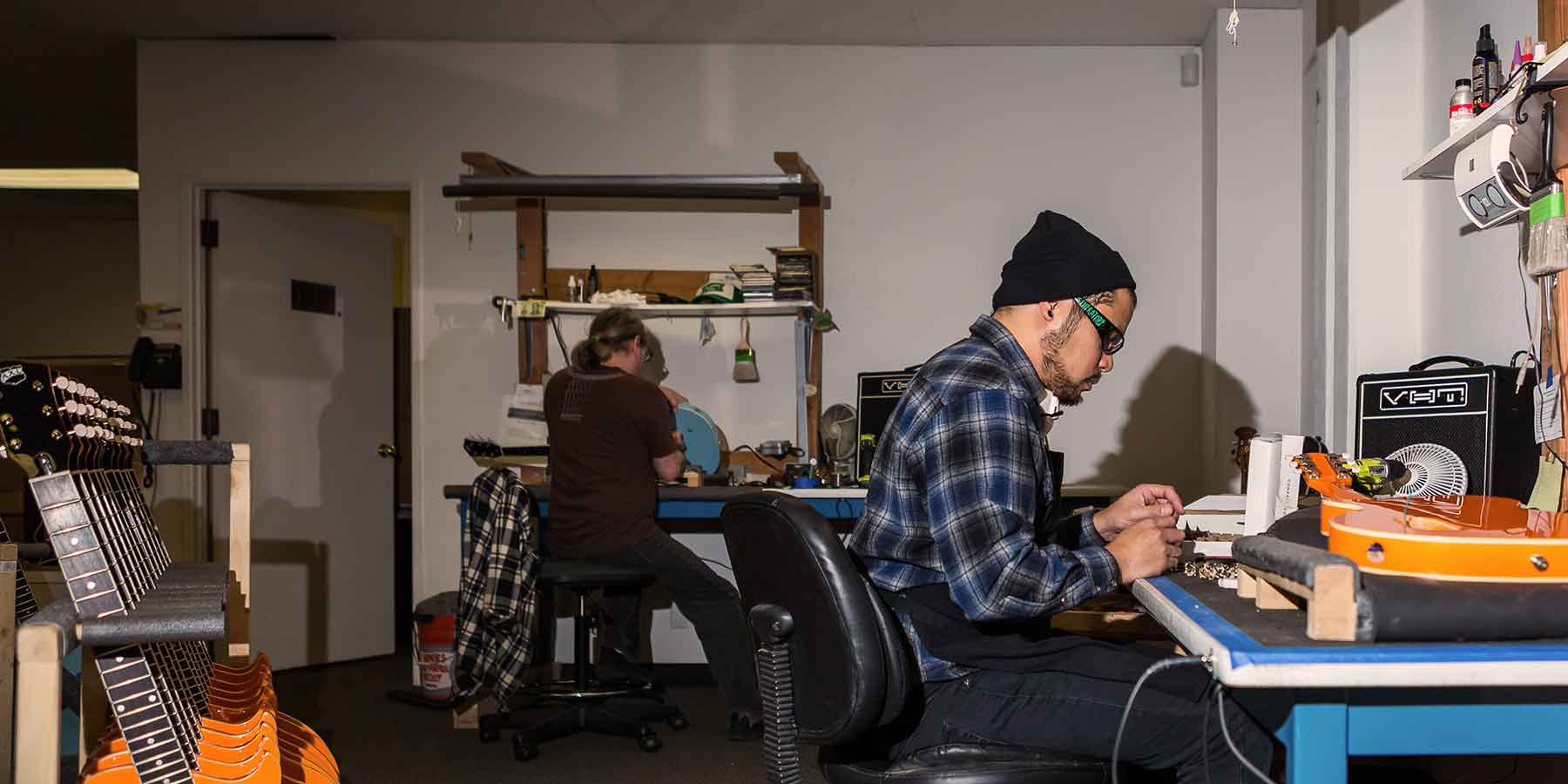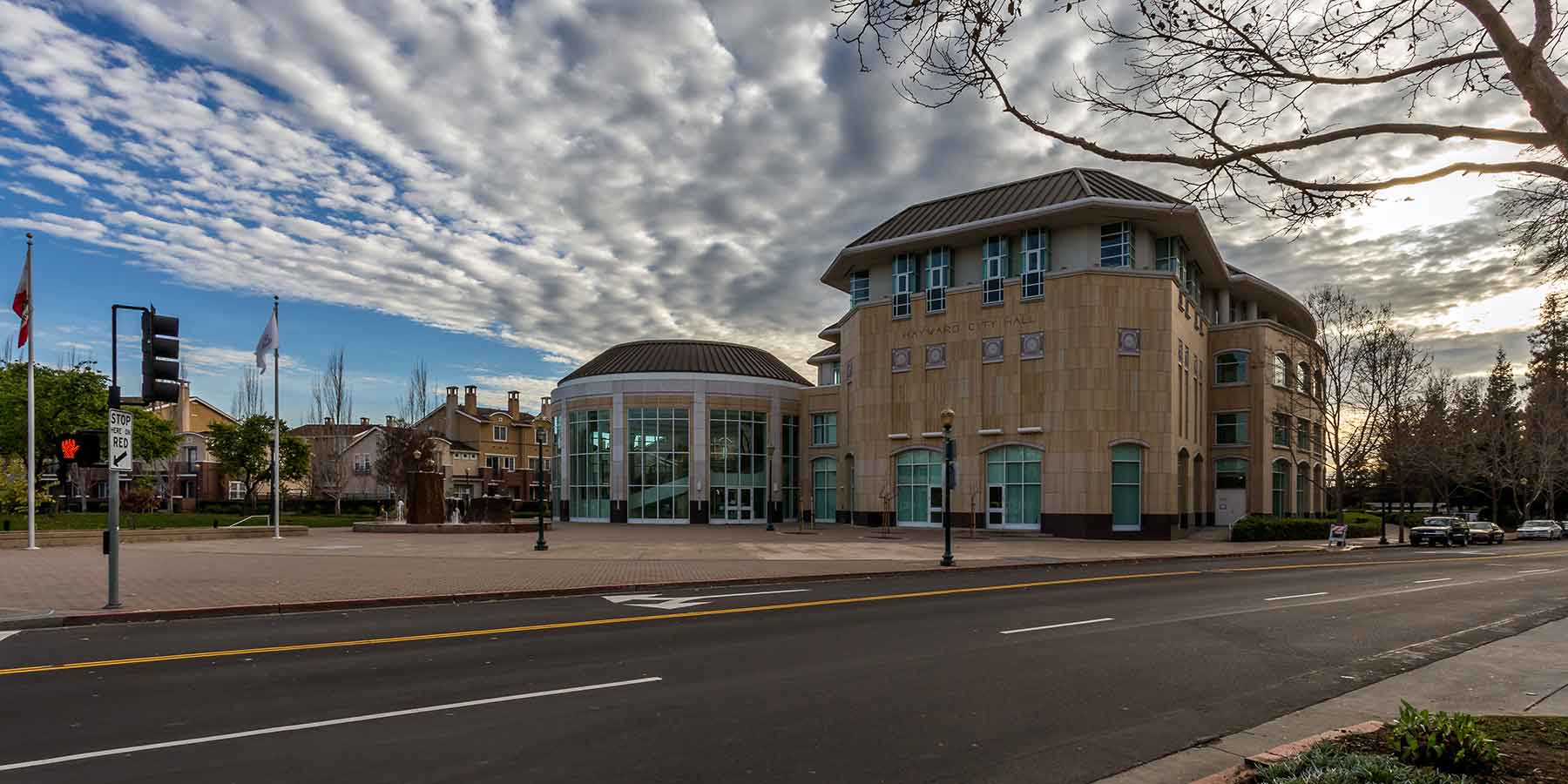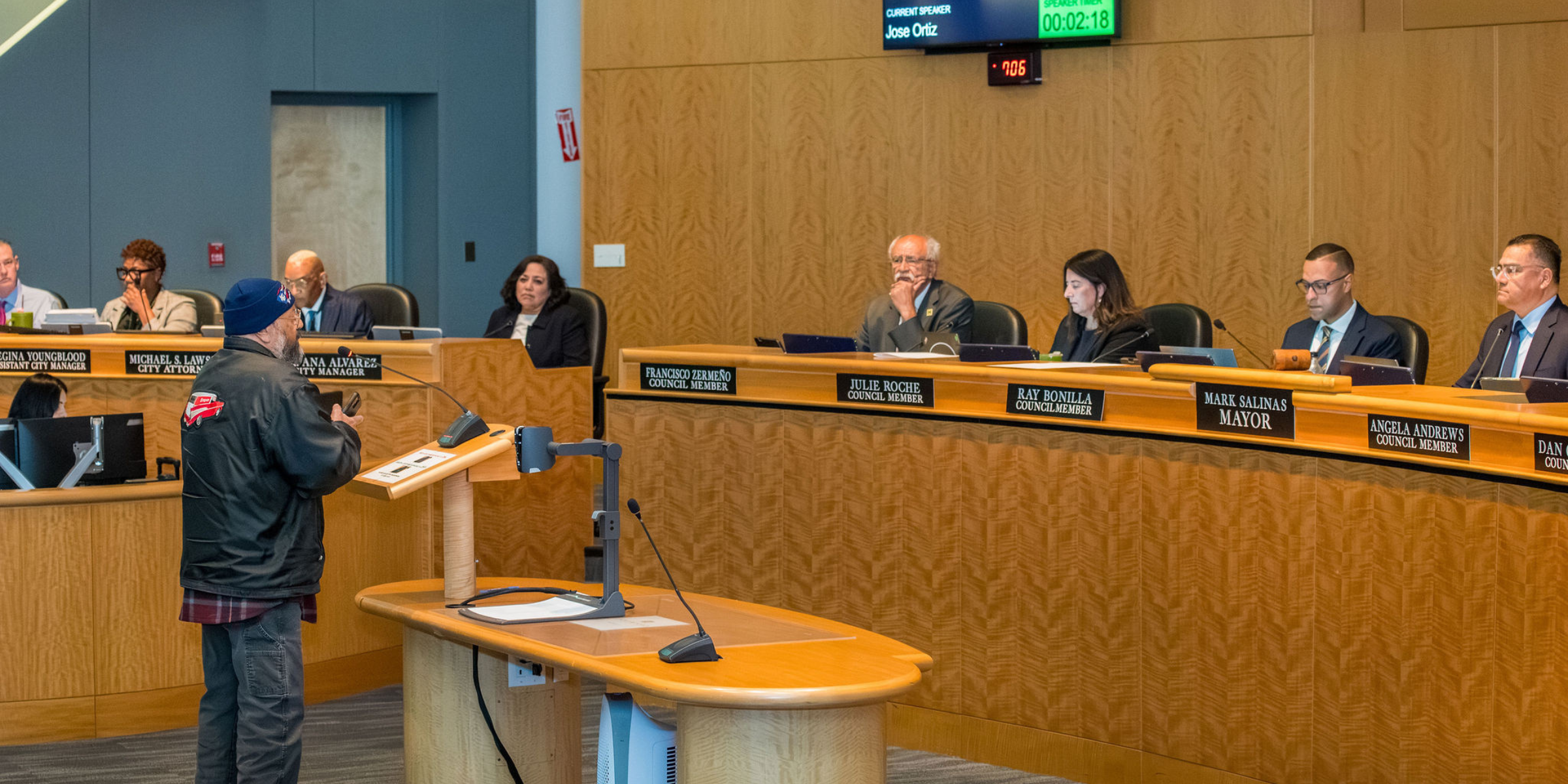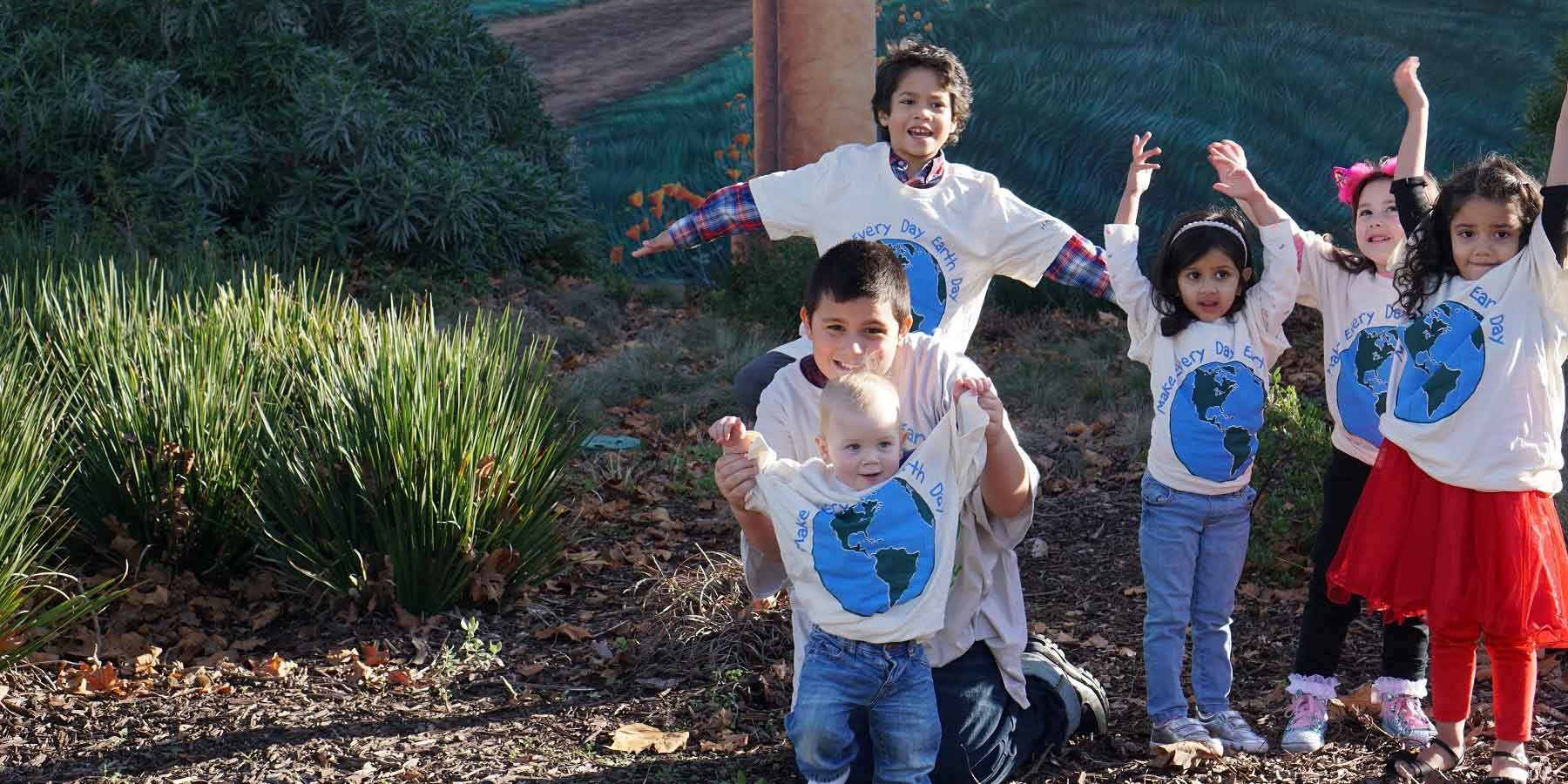Community Health and Quality of Life Element
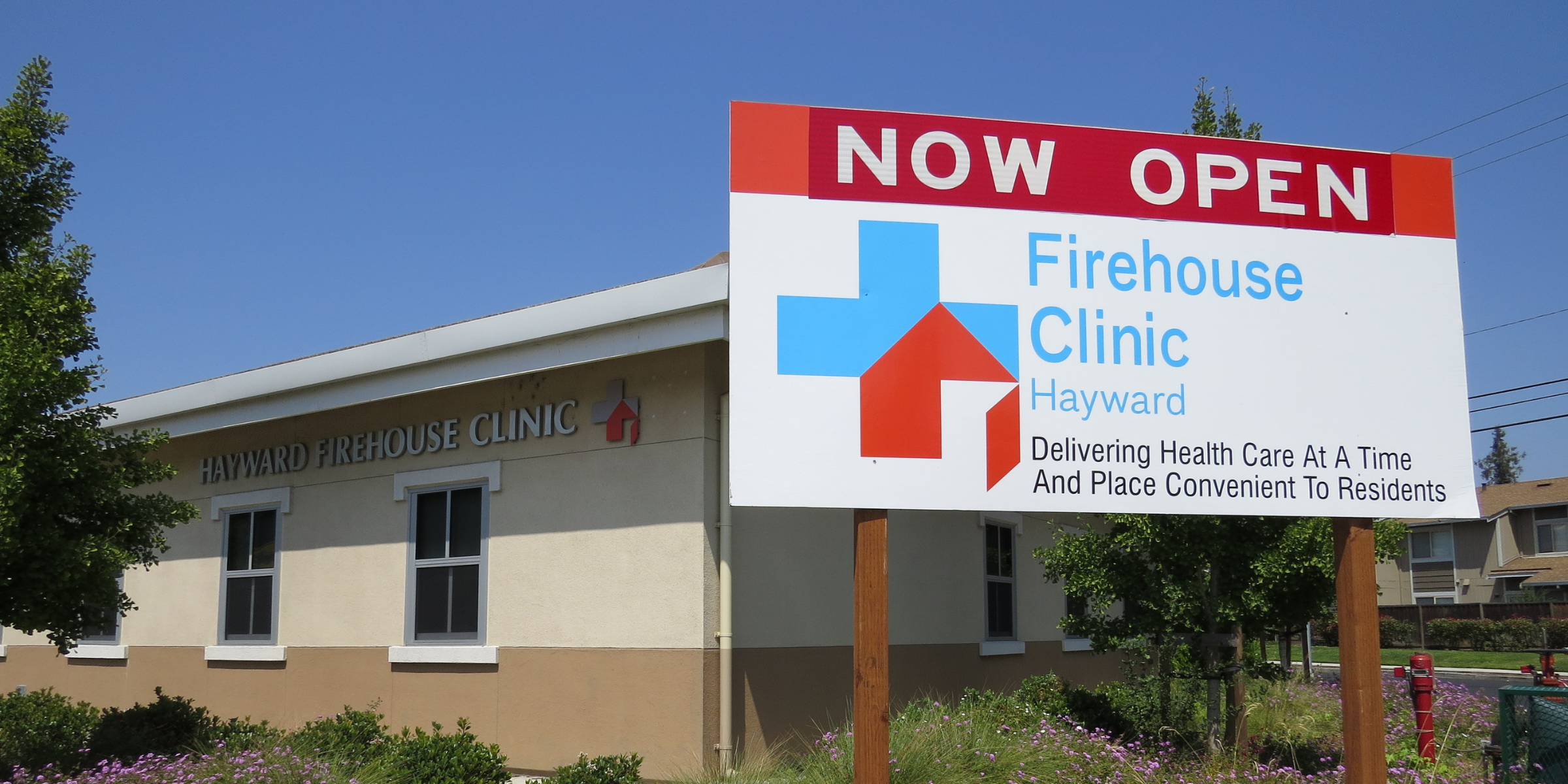
Communities throughout the United States are facing rising levels of obesity, heart disease, asthma, diabetes, and other health issues resulting from a sedentary lifestyle, unhealthy diet, and exposure to poor air quality. Recent research has found that land use planning and neighborhood design have the potential to improve the overall health and quality of life of residents by incorporating uses and design features that encourage people to live active and healthy lifestyles. Neighborhoods with safe and pleasant pedestrian and bicycle networks that provide convenient access to parks, transit, and a mix of commercial and service uses generally encourage outdoor recreation and active transportation (i.e. walking and bicycling). In addition, neighborhoods that provide residents with convenient access to grocery stores, farmers markets, and/or community gardens generally encourage residents to eat healthier food. Land use planning and neighborhood design can also encourage social interaction, reduce crime, help seniors age in place, and minimize exposure to pollution.
The focus of the Community Health and Quality of Life Element is to foster the health and well-being of all Hayward residents. The Element contains goals and policies related to a variety of topics, including active living, access to healthy food, health care access, safe and cohesive neighborhoods, aging in place, environmental health, and parks, recreation, and open space.
Due to the broad and interdisciplinary nature of health issues, other elements of the General Plan contain goals and polices related to health and quality of life, including the Mobility Element, Land Use and Community Character Element, Economic Development Element, and Community Safety Element.
Community Health & Quality of Life Goals:
Goal HQL-1: Improve the health and well-being of all Hayward residents.
The City is committed to improving quality of life and increasing opportunities for residents to make healthy lifestyle choices. Improving access to healthy living requires making health a City priority and taking a cross-jurisdictional and collaborative approach to promoting improved community health. The City is committed to improving health and to acting as a leader and role model of healthy living. Policies in this section express the City’s overarching commitment to healthy living and support the City in expanding its role as a health leader in the community.
HQL-1.1: Health in All Policies:
The City shall prioritize the overall health of Hayward residents in its strategies, programs, daily operations, and practices.
HQL-1.2: Healthy Workplace:
The City shall act as a leader by implementing workplace wellness programs and policies that maintain and improve the health and well-being of City employees. Programs may focus on diet and exercise, and providing private space for new parents.
HQL-1.3: Collaboration for Improved Health:
The City shall collaborate with local health officials, planners, nonprofit organizations, businesses, schools, the Hayward Area Recreation and Park District (HARD), hospitals, local health clinics, and community groups to improve community health.
HQL-1.4: Health Statistics:
The City shall support the Alameda County Department of Public Health by providing information for its ongoing monitoring and tracking of health outcomes and use that data to inform the community and support better decision-making on issues related to health.
HQL-1.5: Health Events:
The City shall provide support to organizations engaged in citywide public health events, such as health fairs, community gardens, youth fitness programs, wellness competitions, and public health speakers and workshops.
HQL-1.6: Address Health Inequities:
The City shall provide support to organizations engaged in citywide public health events, such as health fairs, community gardens, youth fitness programs, wellness competitions, and public health speakers and workshops.
Goal HQL-2: Create convenient and safe opportunities to incorporate physical activity intothe everyday activities of residents, employees, and visitors.
The design of the built environment has a significant impact on the opportunities residents have to live active and healthy lifestyles. Neighborhoods that have a diverse mix of land uses can help reduce vehicle miles traveled and increase walking and bicycling. In general, walking and biking to destinations can provide an increase in physical fitness, social cohesion, and actual and perceived public safety. Studies have shown that residents living in communities with a mix of shops and businesses within easy walking distance have a lower risk of obesity than residents of communities that do not have these services within easy walking distance. Policies in this section promote active livingthrough alternative transportation options, a well-designed built environment that encourages walking and biking, improved park access, and actions that encourage physical activity.
Policies in several other General Plan Elements also support active living. Policies in the Mobility Element and Land Use and Community Character Element seek to create complete and walkable neighborhoods and improve bicycle and pedestrian facilities and transit access.Policies in the Community Safety Element support safe public spaces through law enforcement and community policing.
HQL-2.1: Physical Activity and the Built Environment:
The City shall support new developments or infrastructure improvements in existing neighborhoods that enable people to drive less and walk, bike, or take public transit more.
HQL-2.2: Remove Physical Barriers:
The City shall remove or plan for ways to address physical barriers that bisect neighborhoods and discourage walking or biking.
HQL-2.3: Education about Walking, Cycling and Using Public Transit:
The City shall partner with schools, employers, transit agencies, HARD, and community groups to teach bicycle and pedestrian safety in schools and workplaces and to educate residents and businesses about the health and environmental benefits of walking, bicycling, and using public transit.
HQL-2.4: Bicycle Security:
The City shall strive to reduce bicycle theft through well designed bicycle parking facilities that are located in secure locations with high visibility.
HQL-2.5: Safe Routes to School:
The City shall support the Alameda County Safe Routes to School and other similar programs that promote walking and biking to and from school for children and parents.
HQL-2.6: Education on Sharing the Road:
The City shall support local and regional programs that educate and inform motorists to be aware of non-vehicle roadway users to promote overall safety of multi-modal streets (i.e. pavement markings, roadway signage, and educational brochures).
Goal HQL-3: Expand year-round access to affordable, fresh, and healthy foods throughout the city.
A healthy, varied diet is a critical component to a healthy life.Several factorsdetermine what people choose to eat, but access is a major factor.Studies have found that people buy food that isreadily available. Today, communitieswith the highest rates of obesity are typically placeswhere residents have few opportunities to convenientlypurchase nutritiousfood.A healthy, nutritious diet can reduce the risk of obesity and associated chronic diseases,directly improving one’s health and well-being andminimizing health care costs for local governments.While food is a personal choice, the City of Hayward recognizes the need to create an environment in which all residents have access to affordable and healthy food. Policies in this section promote healthy eating habits in Hayward by increasing access to farmers’ markets, community gardens, and other sources of healthy food; promoting nutrition education; and limiting sources of unhealthy food.
HQL-3.1: Access to Healthy Foods:
The City shall strive to ensure that all residents are within walking distance of sources of fresh and healthy foods (e.g., grocery stores, healthy corner stores, farmers’ markets, and community gardens).
HQL-3.2: New Healthy Food Venues:
The City shall support and consider incentives to encourage the development of new retail venues that sell local, fresh produce, including farmers’ markets, community-supported agriculture programs, and grocery stores, especially in underserved areas and near schools.
HQL-3.3: Healthy Corner Stores:
The City shall use incentives or other programs to encourage existing small grocery or convenience stores to offer and promote healthy food options, with a focus on underserved areas and areas near schools.
HQL-3.4: Partnerships for Farmers' Markets:
The City shall strive to increase the number of farmers’ markets throughout the city and frequency in which they occur by encouraging partnerships between organizers of farmers’ markets and the Hayward Unified School District, neighborhood groups, senior facilities, and business groups.
HQL-3.5: Community Garden Target:
The City, in cooperation with HARD and other community groups, shall strive to establish community gardens in existing and planned parks, and vacant lots.
HQL-3.6: Community Gardens in Multi-Family Housing Developments:
The City shall encourage all new multi-family housing developments to contain designated areas or other shared spaces for community gardens and shall count community gardens toward the common open space requirement.
HQL-3.7: Support for School Gardens:
The City shall support programs (e.g., Alameda County Office of Education Project EAT) that provide school gardens and garden-based nutrition education and cooking classes for students, parents, and community members.
HQL-3.8: Restrict Unhealthy Food Options:
The City shall discourage new liquor stores and fast food restaurants near schools and in areas with an existing high concentration of such stores.
Goal HQL-4: Promote access to affordable health care and medical services for all residents.
Access to health care and preventative care is an important component of community health.A lack of access to health care can exacerbate chronic diseases such as heart disease or diabetes. Health insurance coverage is also strongly correlated with better health outcomes. Uninsured people generally receive much less care, either preventive or for acute and chronic conditions, thaninsured people.Policies in this section promote the expansion of health care facilities and services to meet the health needs of Hayward residents.
HQL-4.1: Adequate Health Care Facilities:
The City shall encourage the development and maintenance of a full range of health care facilities, including hospitals, acute care facilities, neighborhood health portals/clinics, and mental health facilities, to meet the needs of all residents.
HQL-4.2: Public Transit Access to Medical Facilities:
The City shall work with transit service providers and healthcare providers to improve connections to local and regional health care facilitiesfor people who are transit-dependent.
HQL-4.3: Prohibiting Cigarette Sales Near Schools:
The City shall prohibit the sale of cigarettes near schools.
HQL-4.4: Fire Station Health Centers:
The City shall encourage the co-location of health services at fire stations (as space allows) as a way to expand the geographic reach of primary health care.
Goal HQL-5: Facilitate social interaction and foster a sense of security and community pride by assuring safety in neighborhoods and public spaces.
A healthy community is one that promotes safety through the design of the built environment. Increasing healthy outcomes is dependent on an environment where residents feelsafe and secure.People are more likely to walk, bike, and generally live an active lifestyle if they feel safe in their neighborhood.The policies in this section support safe neighborhoods that encourage community interaction and social cohesion.
Several policies in the Community Safety Element also support safe neighborhoods through law enforcement and community policing.
HQL-5.1: Cohesive Neighborhoods:
The City shall support cohesive neighborhoods that sustain mental health, increase social capital, and reduce crime.
HQL-5.2: Safe Public Spaces:
The City shall develop public spaces that provide safe, convenient, and pleasant gathering places for neighbors to meet and congregate.
HQL-5.3: Eyes on the Street:
The City shall promote urban design principles that support active use of public spaces in neighborhoods, commercial areas, and employment centers at all times of day. Active use of public spaces provides “eyes-on-the-street” to enhance public safety in these areas.
HQL-5.4: Safety Measures:
The City shall improve safety and the perception of safety by requiring adequate lighting, street visibility, and defensible spaces within new development projects.
HQL-5.5: Neighborhood Partnership Program:
The City shall maintain and expand the Neighborhood Partnership Program to support local residents who want to work together to improve their neighborhoods.
HQL-5.6: Maintenance of Private Property:
The City shall encourage private landowners to maintain and upgrade their property in residential neighborhoods and in commercial and industrial areas.
Goal HQL-6: Create neighborhoods that enable residents to remain in their homes and live healthy, productive lives as they age.
Policies in this section support opportunities for Hayward residents to remain in their community as they age. Hayward’s senior population will continue to grow in the coming years as the current population ages. Rather than move to a new community, many seniors prefer to stay in their homes and their communities. Aging in place promotes self-sufficiency and preserves valuable social networks that support a higher quality of life for seniors. The current physical environment and provision of services can be improved to promote independence as resident’s age.
HQL-6.1: Aging in Place:
The City shall promote community health, safety, and neighborhood cohesiveness by supporting housing and neighborhood amenities that allow residents to age in place.
HQL-6.2: "Villages" Concept:
The City shall support local efforts of non-profit organizations to offer services modeled on the “villages” concept (a national model that supports aging-in-place by creating a non-profit organization that provides case-management services, resources, and assistance to aging seniors that wish to remain in their homes).
HQL-6.3: Range of Housing for Seniors:
The City shall facilitate the development of a range of housing types, including affordable housing, multi-generational housing, independent living, and assisted living for Hayward seniors.
HQL-6.4: Housing Maintenance Assistance:
The City shall support efforts of seniors to maintain and renovate their homes by providing service assistance, grants, loans, and/or special concessions in permitting procedures to maintain or modify homes to meet needs of senior residents.
HQL-6.5: Universal Design:
The City shall promote the use of Universal Design Principles in new construction and rehabilitation of housing to improve accessibility for seniors.
HQL-6.6: Senior Daycare:
The City shall encourage the development of senior daytime care facilities in appropriate areas in the community.
HQL-6.7: Transit Service for Seniors:
The City shall support efforts to make public transit more accessible to seniors, and shall ensure that public transit services are provided at or near senior housing.
HQL-6.8: Entertainment and Recreation for Seniors:
The City shall coordinate with the HARD to periodically assess entertainment and recreational opportunities for seniors to ensure that their needs are being met.
Goal HQL-7: Protect residents from the harmful effects of pollution, toxic substances, and environmental contaminants.
Environmental health is a significant component of public health. Environmental health concerns include air pollutants, contaminated land or water, and exposure to toxic substances in everyday household items. The policies in this section seek to reduce or eliminate environmental health risks through efforts to protect air and water quality and eliminate toxic substances in the home, workplace, and public spaces.
Several policies in the Natural Resources Element also support environmental health by supporting improved water and air quality, and policies in the Hazards Element address the safe handling of hazardous materials.
HQL-7.1: Support Sustainability Practices:
The City shall support sustainability practices that promote clean water, healthy soils, and healthy ecosystems.
HQL-7.2: Use of Hazardous Materials on Public Property:
The City shall reduce or eliminate, as feasible, the use of pesticides and herbicides that negatively impact human health on City properties, especially in parks and publicly accessible open spaces.
HQL-7.3: Home Use of Hazardous Materials:
The City shall encourage and educate residents, non-profits, and businesses to implement integrated pest management principles, reduce or discontinue the use of pesticides, herbicides, and toxic cleaning substances.
HQL-7.4: Non-Toxic Cleaning Supplies:
The City shall use green and non-toxic cleaning supplies in all public buildings, and shall encourage schools, hospitals, non-profits, and local business to use green and non-toxic cleaning supplies.
HQL-7.5: Proximity to Pollution Sources:
The City shall avoid locating new sensitive uses such as schools, childcare centers, and senior housing, to the extent feasible, in proximity to sources of pollution, odors, or near existing businesses that handle toxic materials. Where such uses are located in proximity to sources of air pollution, odors, or toxic materials, the City shall encourage building design, construction safeguards, and technological techniques to mitigate the negative impacts of hazardous materials and/or air pollution on indoor air quality.
HQL-7.6: Mold and Lead Hazards Prevention:
The City shall partner with the Alameda County Public Health Department, the Healthy Homes Department of the County Community Development Agency, and other relevant organizations to provide education and technical assistance in reducing mold and lead hazards in homes.
Goal HQL-8: Maintain, enhance, and increase the city’s urban forest as an environmental, economic, and aesthetic resource to improve Hayward residents’ quality of life.
Extensive tree canopies reduce the urban heat island effect and make streets and sidewalks more pleasant places to walk. Trees absorb carbon dioxide and pollution and produce oxygen, which contributes to improved air quality and human health. Trees also shelter wildlife and promote biodiversity, and can provide healthy sources of food, such as fruit and nuts. Policies in this section sustain and enhance the city’s urban forest.
HQL-8.1: Manage and Enhance Urban Forest:
The City shall manage and enhance the urban forest by planting new trees, ensuring that new developments have sufficient right-of-way width for tree plantings, managing and caring for all publicly owned trees, and working to retain healthy trees.
HQL:-8.2: Urban Forest Management Plan:
The City shall maintain and implement an Forest Management Plan.
HQL-8.3: Trees of Significance:
The City shall require the retention of trees of significance (such as heritage trees) by promoting stewardship and ensuring that project design provides for the retention of these trees wherever possible. Where tree removal cannot be avoided, the City shall require tree replacement or suitable mitigation.
HQL-8.4: Urban Heat Island Effects:
The City shall promote planting shade trees with substantial canopies, and require, where feasible, site design that uses appropriate tree species to shade parking lots, streets, and other facilities to reduce heat island effects.
HQL-8.5: Tree Giveaway Program:
The City shall continue to provide free street trees to help beautify and keep Hayward green.
Goal HQL-9: Build a foundation for community resilience to future threats and challenges to help ensure the City of Hayward will be able to respond and recover as quickly as possible to such threats and challenges.
Community resiliency is a measure of the sustained ability of a community to use available resources to respond to, withstand, and recover from natural and manmade disasters and other adverse situations, such as economic hardship. Healthy communities are resilient communities that have the necessary tools to confront challenges of climate instability, rising energy costs, and economic recession. The policies in this section support a more resilient community that is better prepared to respond to future threats and challenges.
Several policies in the Hazards Element also support a more resilient community by addressing flooding, sea level rise, and other hazards. Policies in the Economic Development Element support a more resilient economy.
HQL-9.1: Resiliency:
The City shall strive to create a strong and resilient community and region that can withstand or accommodate change and respond to challenges.
HQL-9.2: Improve Social Support Networks:
The City shall support residents and organizations efforts to mobilize assets and improve social support networks to improve local preparedness and respond to and recover from incidents.
HQL-9.3: Collaborate on Resiliency:
The City shall work with residents and businesses to identify priorities for organizing support, implementing programs, and evaluating outcomes of resilience efforts.
HQL-9.4: Economic Resiliency:
The City shall encourage a diversity of businesses and employers and expanded tax base to protect the community from economic shocks and recessions and ensure the City can continue providing adequate services.
HQL-9.5: Hazards Resiliency:
The City shall continue to assess and monitor risks from local environmental (e.g., flooding, earthquake) and man-made hazards and work with community groups and State and regional agencies to prepare residents, business, and visitors in the event of an incident.
HQL-9.6: Energy Resiliency:
The City shall continue to encourage residents and businesses to use less gasoline for transportation, and improve energy efficiency in and renewable energy generation from buildings and industry processes to reduce impacts from rising oil and energy prices.
HQL-9.7: Climate Adaptiation Planning:
The City shall examine the potential long-term impacts of climate change on social, economic, and environmental well-being of the city of Hayward.
HQL-9.8: Climate Adaptation in Plans:
The City shall address climate adaptation in all disaster preparedness and emergency response plans.
HQL-9.9: Reduce IMpacts of Climate Change on Vulnerable Populations:
The City shall support plans, standards, regulation, incentives, and investments to reduce the impacts of climate change on those populations most vulnerable to the impacts of climate change.
Goal HQL-10: Create and support a diverse public park system, connecting trails, and recreation facilities suited to the needs of Hayward residents and visitors.
Policies in this section provide for coordinated efforts between the City, Hayward Area Recreation and Park District (HARD), and East Bay Regional Park District (EBRPD) to maintain existing and develop new local and regional parkland and facilities throughout Hayward. Parks and open space contribute to the quality of life in Hayward and provide residents opportunities to live active, healthy lifestyles. Parklands help to sustain natural environmental resources by providing landscapes that absorb greenhouse gases, produce oxygen, and filter pollutants into the groundwater basin, and provide biodiversity. Additionally, the location of local parks and school recreational facilities can serve as a focal point of neighborhood identity and activity. Parks and recreation policies promote enhancement of existing amenities, as well as development of new parks and recreation facilities as character-defining resources that emphasize the retention of natural landforms and plant communities.
HQL- 10.1: Parks and Recreation Master Plan:
The City shall work with HARD to maintain and implement the Parks and Recreation Master Plan.
HQL-10.2: Parks Standard:
The City shall seek to increase the number of parks throughout the city by working with HARD to achieve and maintain the following park standards per 1,000 Hayward residents:
- Two acres of local parks,
- Two acres of school parks,
- Three acres of regional parks,
- One mile of trails and linear parks, and
- Five acres of parks district-wide.
HQL-10.3: Miniparks and Tot Lots:
The City shall encourage the creation and maintenance of neighborhood “miniparks” and tot lots through partnerships with private, non-profit and business interests in areas where it is not possible to meet HARD standards related to park size.
HQL-10.4: Unrban Infill Parks:
The City shall, for development in urban infill areas where traditional neighborhood and community parks are not feasible or appropriate, work with HARD and developers to produce creative and flexible solutions for creating new urban parks, such as plazas and rooftop gardens.
HQL-10.5: Neighborhood Focal Points:
The City shall require that neighborhood parks be integrated into, and be focal points of new residential neighborhoods.
HQL-10.6: Parks as Buffers:
The City shall consider the use of parks and recreational corridors as buffers between incompatible land uses.
HQL-10.7: Parks Access:
The City shall work with HARD to ensure that new parks are accessible to pedestrians and bicyclists, and are connected with transit, to the extent feasible.
HQL-10.8: Drought Tolerant Landscaping:
The City shall encourage the use of drought-tolerant and drought-resistant landscaping, as well as low impact development (LID) technologies in the development of City parks.
HQL-10.9: Security and Maintenance:
The City shall work with HARD to ensure parks are located, oriented, and designed in such a way as to facilitate security, policing, and maintenance.
HQL-10.10: Neighborhood-Based Park Surveillance:
The City shall encourage citizens, neighborhood groups, businesses, schools, organizations, and public agencies to assist in the surveillance of publicly-owned park and recreational facilities.
HQL-10.11: Buffer Potential Impacts:
The City shall strive to ensure new high-activity level parks and parks intended for night use are designed to buffer existing and planned surrounding residential uses from excessive noise, light, and other potential nuisances.
HQL-10.12: Maximum Park Dedications:
The City shall maintain park dedication requirements and in lieu fees for new residential development at the maximum allowed under State law.
HQL-10.13: Park Funding:
The City shall support HARD efforts to restore the District’s revenue base, and shall pursue all available funding for the acquisition of parkland, the development of park facilities, and the maintenance of existing parks.
HQL-10.14: Joint Use Facilities:
The City shall continue to work with HARD and EBRPD, the school districts, faith-based communities, and the private sector to expand joint use facilities through cooperative agreements.
HQL-10.15: Multipurpose Facilities:
The City shall coordinate with the HARD to increase the number and availability of multipurpose facilities in order to provide a variety of community services, recreational activities, and cultural amenities that are accessible to and benefit a cross-section of the community.
HQL-10.16: Public Facilities for Recreation:
The City shall coordinate with the HARD to improve access to public facilities that can be used for open space and/or recreation activities.
HQL-10.17: Neighborhood Involvement:
The City shall coordinate with the HARD to encourage neighborhood (i.e., residents and businesses) involvement in park maintenance and enhancement.
Goal HQL-11: Provide a continuous system of trails and open space corridors that connect local parks, regional open space areas and other destination points within and beyond the city of Hayward.
Policies in this section support the coordinated preservation, maintenance, and expansion of the City’s trails and open space corridors. Ease of access and connectivity for bicycles and pedestrians are essential characteristics of a successful trail system. The City will support the integration and connection of parklands, natural open spaces, and neighborhoods through greenways and trails that enhance the city’s urban character. Trails and open space corridors provide Hayward’s residents and workforce with opportunities to be active and enjoy the natural environment, provide visual “relief” from urban development, and protect significant plant and animal habitats.
HQL-11.1: Recreational Corridors:
The City shall establish and maintain an integrated recreational corridor system that connects regional trails (e.g., , The San Francisco Bay Area Water Trail, San Lorenzo Creek Trail, Ridge Trail, the Juan Bautista DeAnza National Historic Trail), Baylands (i.e., Hayward Regional Shoreline), local creeks and open space corridors, hillside areas, and EBRPD and HARD parks.
HQL-11.2: Greenway Corridors:
The City shall coordinate with HARD and the EBRPD to consider additional greenway linkages along fault line corridors and in other areas (e.g., rail line, creek, and utility corridors) to encourage walking and cycling and to provide improved access to activity centers.
HQL-11.3: Creekside paths and Trails:
The City shall seek to accentuate, “daylight,” and “green” creeks, culverts, and underground drainage infrastructure through infrastructure improvements and the development review process to establish or extend pathways and trails.
HQL-11.4: Trail Access for People with Disabilities:
The City shall encourage HARD and EBRPD to provide trail access and features for people with disabilities, such as seating areas along paths and trails.
HQL-11.5: Hayward Regional Shoreline Access:
The City shall require, as appropriate, the dedication of public access easements through new developments along the Hayward Regional Shoreline.
HQL-11.6: Regional Coordination:
The City shall coordinate with HARD, regional agencies (e.g., MTC, ABAG, and EBRPD), and surrounding jurisdictions to ensure that recreational corridors within the city connect with existing and planned recreational facilities and trails outside the city.
Goal HQL-12: Create development opportunities for, and support, both public and private recreation programs suited to the broad needs and interests of all Hayward residents.
Policies in this section support the coordinated effort of the City, Hayward Area Recreation and Park District (HARD), East Bay Regional Park District (EBRPD), and school districts to provide for a variety of recreational activities at local and regional parks. Access to a broad range of recreational activities is important to improving public health through exercise and to improving quality of life for Hayward residents.
HQL-12.1: Recreation Activites for All People:
The City shall encourage the provision of recreational activities for all people, consistent with the changing demographic composition of Hayward.
HQL-12.2: After School Recreation Programs:
The City shall work with the school districts and HARD to examine the feasibility of implementing additional after school or summer child care and recreational activities.
HQL-12.3: Cultural and Ethnic Programs:
The City shall encourage and/or promote cultural and ethnic programs and activities of local interest.
HQL-12.4: Neighborhood Needs:
The City shall work with HARD and EBRPD to consider unique neighborhood needs in developing facilities and programs for indoor and outdoor activities.
HQL-12.5: Special Needs:
The City shall work with HARD and EBRPD to consider unique neighborhood needs in developing facilities and programs for indoor and outdoor activities.
HQL-12.6: Public Spaces:
The City shall encourage incorporation of design features in new construction that can provide accessible venues and public spaces for community programs and activities.
HQL-12.7: School Joint Use:
The City shall work with HUSD, HARD and EBRPD to establish cooperative agreements with school districts for the use of school facilities for City-, HARD-, and EBRPD-sponsored recreation programs.
HQL-12.8: Surveys:
The City shall support HARD and EBRPD efforts to periodically survey community attitudes and preferences concerning recreational programs.
HQL-12.9: Private Recreation Facilities:
The City shall strive to attract and retain privately owned recreation and entertainment facilities that help meet the entertainment needs of Hayward youth, adults, and seniors.


